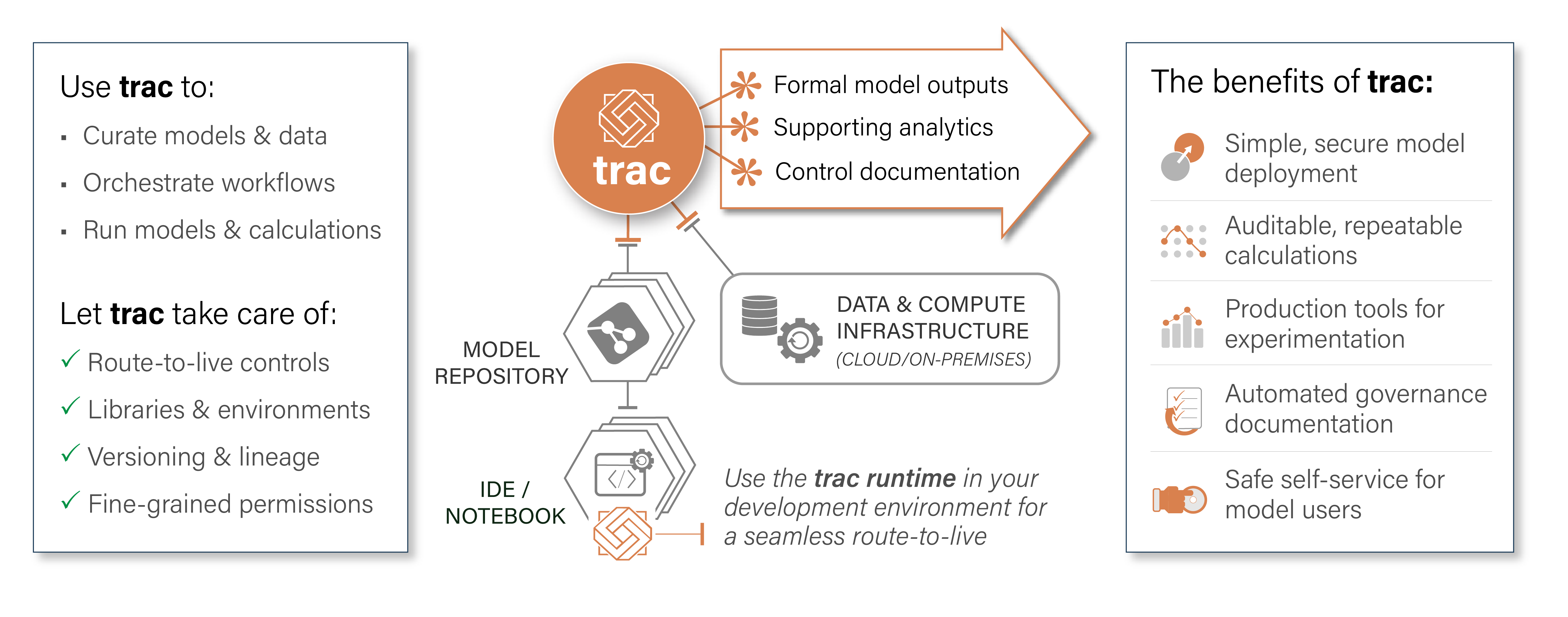Overview¶
Trac integrates your data and compute infrastructure, code repositories and development tools to create a unified environment in which to build, deploy and use models. The result — stronger controls, richer analytics and lower cost — across the model lifecycle.

Note
This short video provides a quick overview of trac and how to use it.
Model orchestration¶
Integrate your data and compute infrastructure, model development tools, and code repositories and create a unified ecosystem in which to build, deploy, and use models.
In this ecosystem, use trac to:
Curate models and data
Orchestrate analytic workflows
Execute calculations
Adding trac to your enterprise data & analytics toolkit therefore gives you:
A simple, secure process to deploy models to production
Auditable and repeatable calculation processes
Powerful built-in tools for experimentation and analytics
Automated governance-ready documentation
A safe, self-service environment for model users — with zero change risk
Structural analytics¶
Structural analytics means any analytic process with a defined structure that needs to be run in a controlled, transparent, and repeatable way. Trac is purpose-built for these use cases, particularly the high-impact models that support accounting, regulatory calculations, and disclosures.
IFRS9 impairment calculations
Risk-weighted asset (RWA) calculations
Stress testing & scenario analysis
Financed emissions and climate risk
Customer-level risk metrics
Liquidity reporting
Model monitoring and validation
Note
The platform is unopinionated and can run any type of model or calculation — this is just a list of example banking use-cases that particularly benefit from trac’s design.